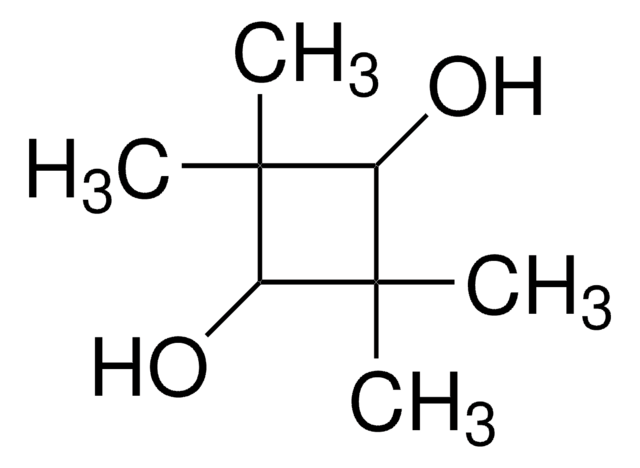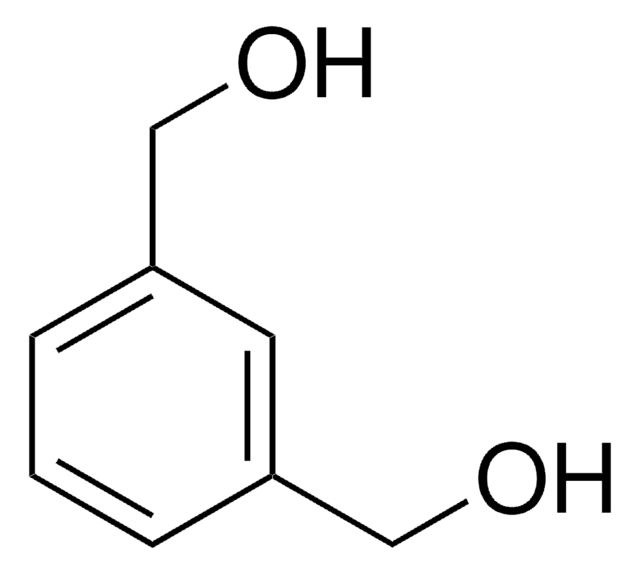125598
1,4-Cyclohexanedimethanol
mixture of cis and trans, 99%
Sinónimos:
1,4-Bis(hydroxymethyl)cyclohexane, mixture of cis and trans
About This Item
Productos recomendados
vapor density
5 (vs air)
assay
99%
autoignition temp.
584 °F
bp
283 °C (lit.)
SMILES string
OCC1CCC(CO)CC1
InChI
1S/C8H16O2/c9-5-7-1-2-8(6-10)4-3-7/h7-10H,1-6H2
InChI key
YIMQCDZDWXUDCA-UHFFFAOYSA-N
Categorías relacionadas
General description
application
signalword
Danger
hcodes
Hazard Classifications
Eye Dam. 1
Storage Class
11 - Combustible Solids
wgk_germany
WGK 1
flash_point_f
321.8 °F - closed cup
flash_point_c
161 °C - closed cup
ppe
Eyeshields, Gloves, type N95 (US)
Certificados de análisis (COA)
Busque Certificados de análisis (COA) introduciendo el número de lote del producto. Los números de lote se encuentran en la etiqueta del producto después de las palabras «Lot» o «Batch»
¿Ya tiene este producto?
Encuentre la documentación para los productos que ha comprado recientemente en la Biblioteca de documentos.
Los clientes también vieron
Nuestro equipo de científicos tiene experiencia en todas las áreas de investigación: Ciencias de la vida, Ciencia de los materiales, Síntesis química, Cromatografía, Analítica y muchas otras.
Póngase en contacto con el Servicio técnico

![4,8-Bis(hydroxymethyl)tricyclo[5.2.1.02,6]decane, mixture of isomers 96%](/deepweb/assets/sigmaaldrich/product/structures/973/006/555dc1f2-c191-4d54-9aea-19fd4c3544a2/640/555dc1f2-c191-4d54-9aea-19fd4c3544a2.png)




![Tricyclo[5.2.1.02,6]decanedimethanol diacrylate](/deepweb/assets/sigmaaldrich/product/structures/327/536/0dc81542-b920-47ec-99c1-d064a327a315/640/0dc81542-b920-47ec-99c1-d064a327a315.png)




